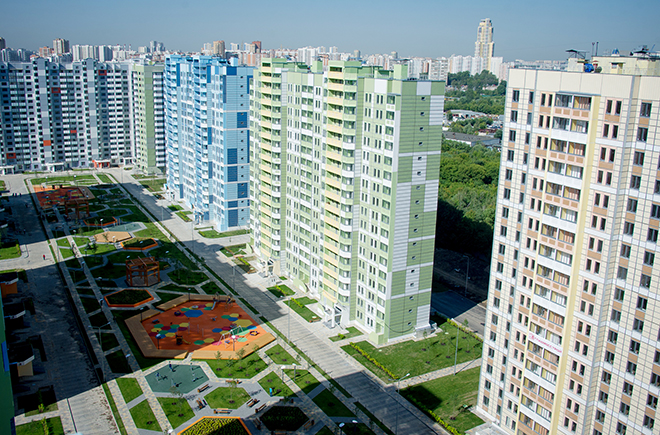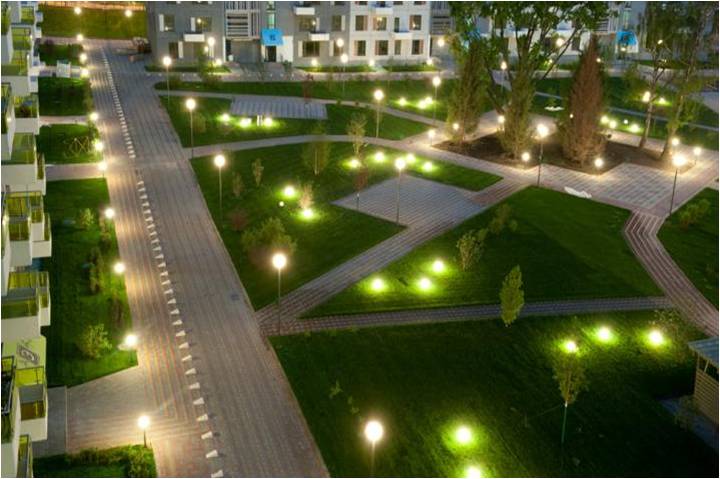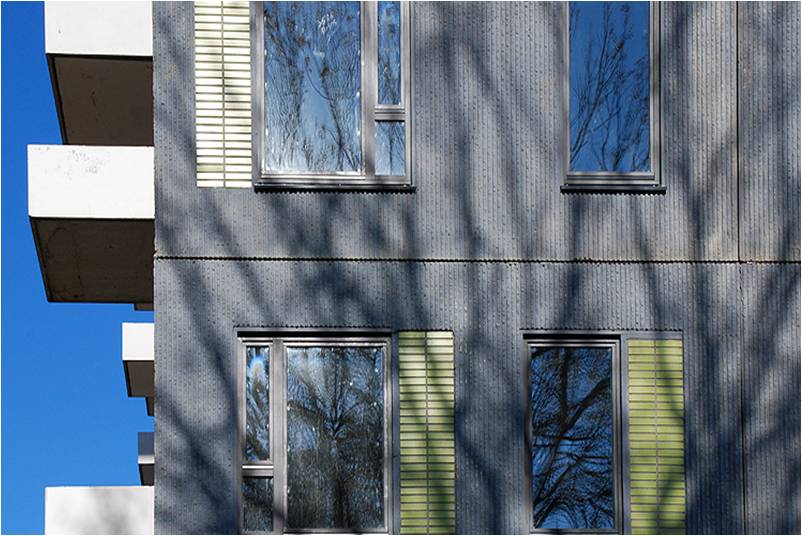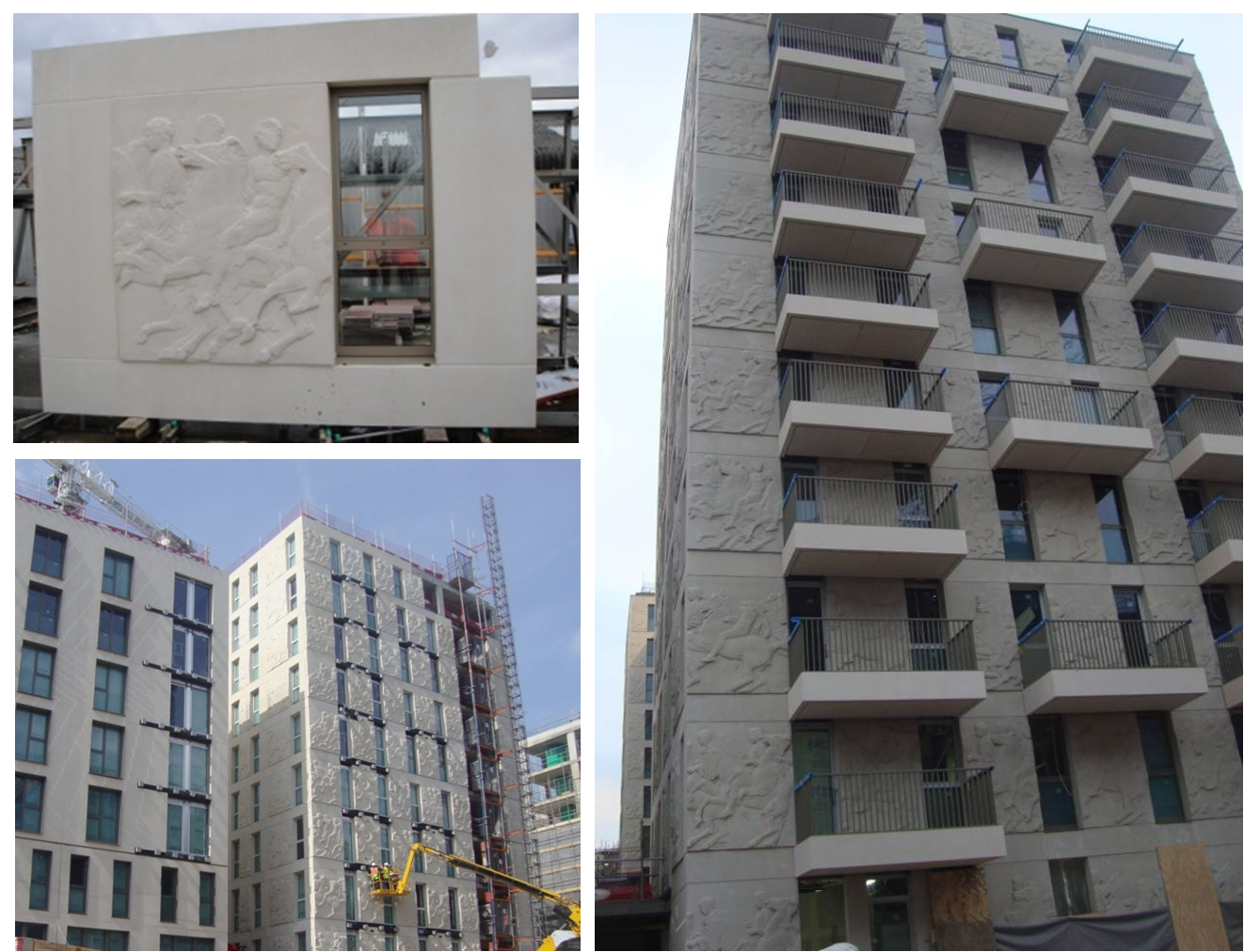Industrial architecture of the post-industrial period

First up for discussion at a meeting of Archcouncil members on August 20 was not an individual project, but rather a development concept of a whole trend — industrial mass residential construction. Sergey Kuznetsov, the Chief Architect of Moscow, made an introductory report on the new criteria and requirements for house-building factoriesdeveloped by a team from the Committee for Architecture and Urban Planning of Moscow. Evgenia Murinets, Head of Directorate for the Architecture Council, told what actions will required from house-building factories to modernize standard elements.

Since the first screening of the popularly beloved comedy it has been almost four decades, but by an “irony of fate” Muscovites, and residents of cities in other countries for that matter, are still at risk of falling into the well-known comical situation. (In the film The Irony of Fate, the hero of the story mistakes a flat in Leningrad for his own flat in Moscow — essentially at fault were identical buildings in both cities). According to the estimates of the capital’s chief architect, Sergey Kuznetsov, house-building factory production now accounts for 30 to 50% of housing being built in Moscow. The immediate prospects for development of large areas in the new city territories will increase these volumes manifold.
Sergey Kuznetsov believes that the current situation requires immediate action. Prefabricated construction has undoubted advantages — the speed of construction and relatively low cost. But the current quality of such housing does not satisfy neither consumers nor the city.

By order of the Mayor of Moscow Sergei Sobyanin, a program of modernizing house-building factories has been launched. The transition to the new standards of production should be completed before the end of 2015.
“Our task today is to provide house-building factories with the most explicit criteria of how we see mass housing, and what we believe is right for the development of prefabricated construction,” said Sergey Kuznetsov.
Lessons from Bazovskaya Street
The mass housing modernization program designed by the Committee for Architecture and Urban Planning is aimed primarily at improving urban development indicators. Sergey Kuznetsov called the principle of district development the most important criterion. Historical panel sections were not designed for this, so in the stock list of house-building factories there are virtually no adequate corner sections. Neither are there sections that allow you to effectively develop social functions of the first floor. The ability to vary the finishing of facades is limited by decorative tools. Rigid and often unsuccessful apartment layouts reduce the attractiveness of prefabricated housing for residents.
In preparing the concept, both foreign and contemporary Russian experience of industrial housing was studied. Many criteria that were brought up at the Archcouncil meeting had been worked out in the project of the municipal housing complex on Bazovskaya street.

“We are in no way positioning this example as a model, nor inviting all to build precisely this way. This project was developed as a pilot project and it was intended to answer the question of prefabricated construction resources in its present state,” said Sergey Kuznetsov.
From the project on Bazovskaya Street, it was understood that there is a necessity for height variations of sections ranging from 6 to 17 floors. It became clear that the use of sections of low and mid-rise heights, arranged denser, allows you to make the environment more on a human scale. Another illustrative lesson from Bazovskaya is the form of sections: facades of neutral plastic, avoiding bay windows and other repetitive active components eliminate the effect of monotony.
At the same time, the project has shown that the set of tools which are standard in house-building factories today, “are extremely inadequate,” according to Kuznetsov, to form a truly interesting architectural environment comfortable for a normal life.

Technical requirements for house-building factories
Evgenia Murinets, Head of the Directorate for the Architecture Council, focused the discussion on the requirements that are proposed to be included in the technical requirements of the modernization of house-building factory production. Compliance will enable factories to meet the basic principles of forming a comfortable living environment, which the chief architect mentioned in his introductory report. In total, five such criteria were highlighted.
1. Variable number of storeys, the capability to build variable sections, including low and medium-height (height from 6 to 17).
2. Variability of layout decisions, both for individual apartments, and on the scale of typical sections, as well as working out units for an adequate design of corner sections and ends of buildings.
3 Variability of facade treatments, including within the same section.
4 Ability to offset the sections relative to each other. This will allow the urban planning situation and the shape of the site to be taken into account when placing the buildings, and thereby improve the quality of the district’s layout.
5. Formation of open public spaces on the first floor. For house-building factories, this criterion means the need to ensure a maximally free layout of the first floor of typical sections (a minimum size of 100-250 m) with the possibility of increasing the area of facade glazing.

A decision with far-reaching prospects
Calling on Archcouncil meeting members to actively express their opinions on the presented criteria and requirements, Sergey Kuznetsov drew his colleagues’ attention to the seriousness and responsibility of the decisions being discussed. House-building factories are vast industrial complexes and their production is difficult to modernize. Accordingly, the decisions that are taken today will determine the quality of urban mass housing in the years ahead.
In the process of discussing the concept, the views of Archcouncil members vacillated between skepticism about the possibility of upgrading the house-building factories, and an understanding of the need for urgent action to interrupt further replication of low-quality urban development.
Hans Shtimmann recommended lowering the height of buildings, particularly in corner sections. Also, the former chief architect of Berlin had questions regarding the opening up of courtyards for public access, and parking organization. Yuri Grigoryan, the head of Project Meganom bureau supported his foreign colleague.
“World experience shows that housing quarters with more than 9 floors do not exist,” he assured. In addition, a study conducted by Dutch architects showed that in the correct proportions a 9-storey block provides even greater density than any microdistrict.

Also, according to Yuri Grigoryan, in the presented concept the notion of diversity of architecture is often replaced by decoration. Sergey Kuznetsov agreed with his colleagues that there is a risk of falling into decoration, but noted that experiments with color caused by a lack of other tools, allow you to bring in individual visual features in the architecture of prefabricated houses.
He also fully agreed with the positive influence of height restrictions on the quality of the environment. However, to sustain the principle of blocks when taking into account such legislative rudiments as insolation, is very difficult. So you have to compensate the low-density development by increasing its height, explained the chief architect.
Vladimir Plotkin urged caution regarding the principle of free internal apartment layouts, as its implementation requires not only special design solutions, but also specially working out utilities.
Otherwise, enormous problems may arise in the operation of the building. It is better to make more variants of good layouts and to think about expanding the typology, said the chief architect of TPO Reserve. His view was shared by other members of the Archcouncil.

Skeptics and realists
The biggest skeptic regarding the modernization of house-building factories for the development of new types of re-use projects to replace the existing ones was Yuri Grigoryan. In his view, standard house building has become obsolete, and today factories should produce a universal product, from which you can build any project, as industrial plants do worldwide.
Vladimir Plotkin also believes that without a radical change in production technology, the Committee for Architecture and Urban Planning’s house-building factories concept is unworkable. Such techniques are already available, including in Moscow. The KROST company already for a long time has been working with Finnish technology, which allows you to create panels with any texture, “cut them like sausage” — any size, any shape.
Sharing the opinion of his colleagues that the full transition to customized designs would be an ideal situation for the city, Chairman of the Archcouncil Sergey Kuznetsov suggested, however, a realistic look at the problem.
House-building factories have a large production capacity, which cannot be rebuilt and re-equipped simultaneously. It is necessary to develop a strategy for an incremental movement toward solving the problem, and as a first step you need to interrupt the accumulation of a faceless mass of microdistricts.
It is essential that representatives of house-building factories are ready to meet the suggestions of the city, while the Government of Moscow today has effective economic and legal levers to influence the situation. Therefore, he urged his colleagues to take an active part in the elaboration of such a stepwise strategy. The Architectural Council is not the only platform on which it is planned to discuss this topic, it will also be part of a wide public discussion, said Sergey Kuznetsov.

Andrei Gnezdilov, the chief architect of the Institute of the General Plan, supported the Chairman of the Archcouncil. According to him, ahead we still have many years of using house-building factories, so the criteria the Committee for Architecture and Urban Planning has started to devise should form the basis for further work.
At the next meeting of the Archcouncil which will take place in late September, representatives of house-building factories will be held accountable for the work done in preparing concepts for the modernization of production. The presentation of the final versions of the concepts taking into account the comments of the September Archcouncil meeting is expected to be in late December. In between the meetings, the city government plans to hold a wide discussion of the concepts with the participation of all stakeholders. Factories will have one year to implement a program of modernization.




